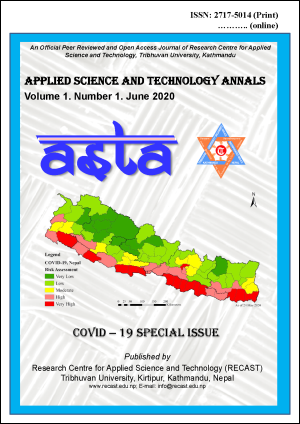Veterinary medicine as the core of the one health approach for Nepal's preparedness to pandemics like COVID-19
DOI:
https://doi.org/10.3126/asta.v1i1.30284Keywords:
COVID-19, Nepal, one helath, veterinary medicine, zoonosisAbstract
Coronavirus disease of 2019 (COVID-19) is a declared pandemic of our time and mankind’s advancement in science and medicine till now have been dwarfed and proving insufficient. It looks likely that there is no other option but to live alongside this global, deadly and multifaceted virus and many more emerging and remerging diseases. This opinion piece is a summary from review of literatures and accumulated experience of the author spanning over two decades in teaching, research and clinical setting of veterinary science. The findings stresses on established fact that: Nepal is a hotspot for many zoonotic diseases that include Avian Influenza, Rabies, Japanese Encephalitis, Leptospirosis, Brucellosis, Tuberculosis, Cysticercosis and Fascioliasis. Of the 39 zoonotic diseases reported in Nepal, viral diseases (Rabies, Avian influenza, Japanese encephalitis), bacterial diseases (Leptospirosis, Salmonellosis, Brucellosis) and parasites (Cysticercosis, Hydatidosis, Toxoplasmosis) are most notable. COVID-19 is also reported in cat, mink and zoo animals and the situation gets complex when animals like humans present asymptomatic appearance. Thus, the control mechanism for COVID-19 is incomplete without inclusion of veterinary medicine. Nepal has a huge gap between human and veterinary medicine both in teaching and clinical services. Tribhuvan University’s veterinary program is historical one in Nepal and is over quarter century old. The veterinary services of Nepal are now being requested to be included as an essential service and that will add force to the One Health momentum. It is fact that humans have to live alongside evolving pathogens. Veterinary medicine as the core of One Health should be the new strategy to safeguard life and economy of any country including Nepal.
Downloads
Downloads
Published
How to Cite
Issue
Section
License
© Research Centre for Applied Science and Technology (RECAST)

